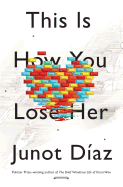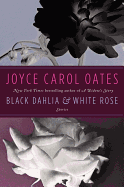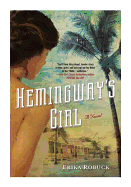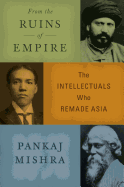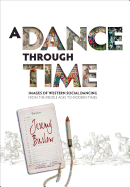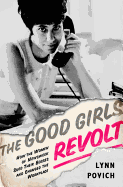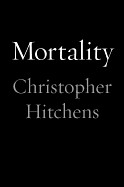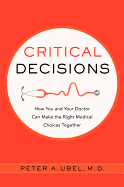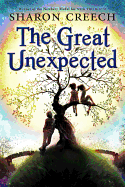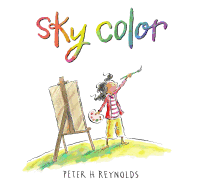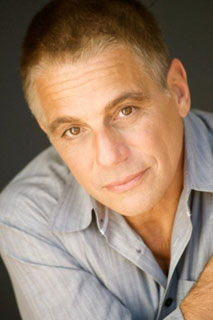 Tony Danza is best known as an actor from TV series like Taxi and Who's the Boss? He took a year off from acting to become a teacher, though, for an A&E reality show called Teach. He then wrote a book based on his experiences, I'd Like to Apologize to Every Teacher I Ever Had: My Year as a Rookie Teacher at Northeast High, which was just released by Crown Archetype.
Tony Danza is best known as an actor from TV series like Taxi and Who's the Boss? He took a year off from acting to become a teacher, though, for an A&E reality show called Teach. He then wrote a book based on his experiences, I'd Like to Apologize to Every Teacher I Ever Had: My Year as a Rookie Teacher at Northeast High, which was just released by Crown Archetype.
Why did you write a book about teaching? Why didn't you just stop with the TV show?
First of all, I felt like the story wasn't told. Teach stayed only for the first semester, up 'til Christmas. Then they left. They were back and forth just a little bit just to clean up stuff, but basically, they were gone after the first semester. And it showed how little we knew about the thing. We found out, if we were going to do only one semester, we should have done the second semester.
So the story wasn't finished being told, and I thought it deserved more than it got. I actually like the show; I fought hard for the kind of show that we did. Just this week, (a reality show producer) came out and said 90% of reality TV is made up! And that's what I was battling against. I was trying always to do what was really happening and I didn't want to dramatize things. The idea was to shine a light into an inner-city high school and see really what is going on.
What was the most rewarding part of writing the book?
In the interest of full disclosure, I had an editor. And I wrote about 90,000 words. And I handed in the manuscript, and luckily I was introduced to a woman named Amy Lou, who helped me. First of all, she found 75,000 pretty good words in there and threw out 15,000. And she helped me organize it. And I think the greatest feeling was when we actually finished it and read it. There was my book! There were my words! And it was a book! It was a really magnificent feeling, too. And I'm proud of it.
What was the hardest thing for you to reveal about yourself?
I don't think it was that difficult. I don't think I shied away from it, either. I think one of the things that I'm sort of proud of myself for--or something I think is integral to myself--is that I do jump in with both feet. And I don't hedge. I don't think you can hedge if you're going to go try and do this, because the kids would read it, and the reader would see it in the writing. And by the way, I'm 61 years old. There's not much that I'm embarrassed about anymore. It's like Popeye: I am what I am.
What do you want your readers to take away from this book?
Well, I wanted to see a good story. I wanted to be entertained. More than anything else, I'm always trying to do that. It's not some kind of preachy book; it's just what I saw. I think the takeaways are that there are good kids that are trying out there, that they are our kids, they're not somebody else's kids. That there are many, many obstacles that both kids and teachers face. And that any kind of demonization doesn't help solve problems.
I think that instead of complaining, maybe we could all chip in, because these are our kids. Until we can convince kids that education is in their interest, we are going to be in trouble. We have a culture that constantly undermines this message. You have a constant barrage of anti-intellectual and anti-education messages hitting kids every day. You have to convince them that this is important, that this small part of their life will impact the whole rest of their lives. It's very hard, because I never thought like that when I was a kid. I never thought about the rest of my life. I only thought about that day.
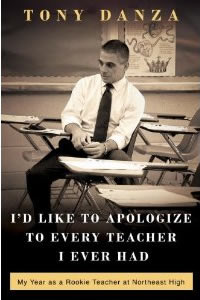 Do you see the problems in education that you point out in the book as the symptoms or the causes of what's going on in society?
Do you see the problems in education that you point out in the book as the symptoms or the causes of what's going on in society?
Obviously they're connected, but it's certainly symptomatic. I mean, look, the other day, there was an article in the paper about the head of Viacom/CBS making $80 million this year. THIS YEAR. Which, all right, he runs the network, but he's making money from a company that puts on Mob Wives and Jersey Shore. Don't get me wrong, I don't mean to pick on Jersey Shore. I don't have any love for them, but if I was 25 and you told me to go to a beach and act out, I'd go do it. But the suits that put that stuff on and then complain about the issues, I mean, I just don't think that's fair.
I don't see anybody worrying about the unbelievable budget cuts to education. I just don't get it. I mean, I understand austerity; I don't want to have more debt, either. But college education and high school education is not just about a job, it's about expanding your mind and becoming a critical thinker so you can then adapt to what will be a changing world. Right? I mean, that's what that's about. It's not only about making $54,000 or $85,000 or $1 million or $80 million. It's about understanding. I think that's the problem.
Are you planning on teaching again?
I'm planning on staying involved with the school. I'm planning on staying involved with the issue. It's a difficult thing to do. I have a tremendous sense of the clock ticking. I'll be 62. I have some things I really want to do. I want to give this great performance. I want to be on Broadway. I want to spend time with my kids and grandkids.
But teaching is a very difficult job. It just takes away from everything else. You just have to lose yourself. That year I was incommunicado. It shows you how tough that job is. And why there are a lot of spinster teachers. --Rob LeFebvre, freelance writer & editor
Tony Danza: What's Really Going On in Education
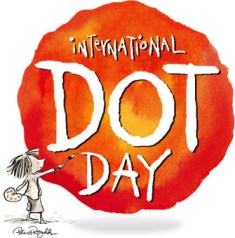 Author and artist Peter H. Reynolds kicks off the third annual Dot Day with Mayor Thomas Menino at the Boston Children's Museum. Fittingly, the celebration began with a teacher, Terry Shay of Waterloo, Iowa, and his students on September 15, 2009. It was Vashti's teacher in The Dot who set the budding artist on her path with the suggestion, "Just make a mark and see where it takes you."
Author and artist Peter H. Reynolds kicks off the third annual Dot Day with Mayor Thomas Menino at the Boston Children's Museum. Fittingly, the celebration began with a teacher, Terry Shay of Waterloo, Iowa, and his students on September 15, 2009. It was Vashti's teacher in The Dot who set the budding artist on her path with the suggestion, "Just make a mark and see where it takes you."


 Tony Danza is best known as an actor from TV series like Taxi and Who's the Boss? He took a year off from acting to become a teacher, though, for an A&E reality show called Teach. He then wrote a book based on his experiences, I'd Like to Apologize to Every Teacher I Ever Had: My Year as a Rookie Teacher at Northeast High, which was just released by Crown Archetype.
Tony Danza is best known as an actor from TV series like Taxi and Who's the Boss? He took a year off from acting to become a teacher, though, for an A&E reality show called Teach. He then wrote a book based on his experiences, I'd Like to Apologize to Every Teacher I Ever Had: My Year as a Rookie Teacher at Northeast High, which was just released by Crown Archetype. Do you see the problems in education that you point out in the book as the symptoms or the causes of what's going on in society?
Do you see the problems in education that you point out in the book as the symptoms or the causes of what's going on in society? Amy Elizabeth Smith tackles these questions in her memoir All Roads Lead to Austen, as she travels to six South American countries, conducting Austen book clubs and movie viewings in each one. Although the cultural contexts differ widely, Smith is surprised and delighted to find that Austen's stories provoke strong reactions among Latin Americans. Smith and her new friends debate the wisdom of Elinor Dashwood, deconstruct the matchmaking of Emma Woodhouse, and roll their eyes at the flighty Mrs. Bennet.
Amy Elizabeth Smith tackles these questions in her memoir All Roads Lead to Austen, as she travels to six South American countries, conducting Austen book clubs and movie viewings in each one. Although the cultural contexts differ widely, Smith is surprised and delighted to find that Austen's stories provoke strong reactions among Latin Americans. Smith and her new friends debate the wisdom of Elinor Dashwood, deconstruct the matchmaking of Emma Woodhouse, and roll their eyes at the flighty Mrs. Bennet.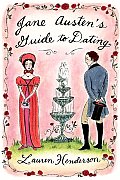 Lauren Henderson takes a different tack in Jane Austen's Guide to Dating, as she examines the 21st-century dating game through the lens of Austen's heroines, the men they love and the minor characters who also live happily ever after (or not). A novelist who wrote her dissertation on courtship rituals in Austen's novels, Hart brings both deep knowledge and a fresh perspective to the subject. The book includes two quizzes, so readers can determine which of Austen's heroines--or heroes--they and their significant others resemble.
Lauren Henderson takes a different tack in Jane Austen's Guide to Dating, as she examines the 21st-century dating game through the lens of Austen's heroines, the men they love and the minor characters who also live happily ever after (or not). A novelist who wrote her dissertation on courtship rituals in Austen's novels, Hart brings both deep knowledge and a fresh perspective to the subject. The book includes two quizzes, so readers can determine which of Austen's heroines--or heroes--they and their significant others resemble. For some much-needed male perspective, turn to William Deresiewicz's memoir A Jane Austen Education. A longtime Austen skeptic, Deresiewicz picked up Emma in graduate school (under duress) and surprised himself by enjoying it. As he read through the Austen canon, he began to examine his choices and relationships, realizing that while Austen's characters all make mistakes, they grow up by learning to take responsibility for their own lives.
For some much-needed male perspective, turn to William Deresiewicz's memoir A Jane Austen Education. A longtime Austen skeptic, Deresiewicz picked up Emma in graduate school (under duress) and surprised himself by enjoying it. As he read through the Austen canon, he began to examine his choices and relationships, realizing that while Austen's characters all make mistakes, they grow up by learning to take responsibility for their own lives.

